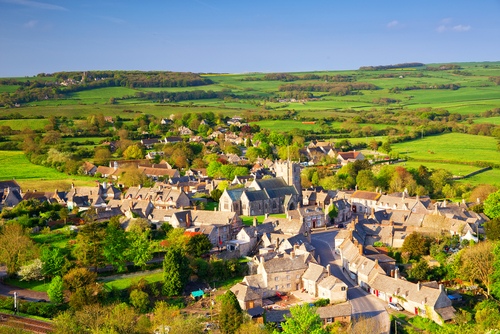Buying a home in a conservation area – what do I need to know?
Fancy a home full of age and character? Chances are you could be buying in a conservation area.
A study by the London School of Economics found that while houses in conservation areas often sell for a premium of nine per cent, home improvements tend to cost more too.
There may also be restrictions on what work you can do. In some areas the rules may prevent you adding the extension your heart is set on, and even limit the choice of colour you paint your front door, with strict penalties for any breach.
Knowing what you are letting yourself in for is important, which is why it's worth taking specialist conveyancing legal advice at the earliest possible stage.
What is a conservation area?
Conservation areas are designated by local authorities to manage and protect certain unique architectural and historical characteristics.
Every local authority in England has at least one conservation area and there are currently around 10,000 across the country. These include the centres of historic cities, towns and villages, fishing and mining villages as well as 18th, 19th and 20th century suburbs.
In conservation areas, local authorities place extra restrictions on properties known as Article 4 Directions. These limit the changes you are normally allowed to make without planning permission, known as 'permitted development rights'.
How do I find out if a home I want to buy is in a conservation area?
Contact your local council to find out if the property is in a conservation area. They will be able to tell you when the conservation area was created and why, how far it extends and the level of legal protection in place, including Article 4 Directions.
Most councils have details of all the local conservation areas on their website and you can often search by postcode.
What am I allowed to do to my home in a conservation area?
Rules vary but any Article 4 directions in place limit the changes homeowners would normally be able to make to their properties under permitted development rights, including:
- Adding a single storey extension over a certain size;
- Putting up a new shed, outbuilding or swimming pool;
- Installing a satellite dish or antennae facing the road;
- Replacing doors and windows;
- Altering gutters or downpipes;
- Cutting down, topping or lopping any but the smallest trees
You should always consult with the local authority before carrying out any alterations which affect the appearance of the property.
Trees in a Conservation Area are always protected and (with limited exceptions) it is an offence to top, lop, uproot, wilfully damage or destroy any tree within the Conservation Area without first having given six weeks formal notice to the Council. The Council is then able to consider the work and whether to make a Tree Preservation Order.
Get in touch
If you have an eye on a property in a conservation area, Wards Solicitors has a specialist conveyancing team who will flag up any potential problems at an early stage.
Click here for details of Wards conveyancing team, or find your nearest Wards office here.


